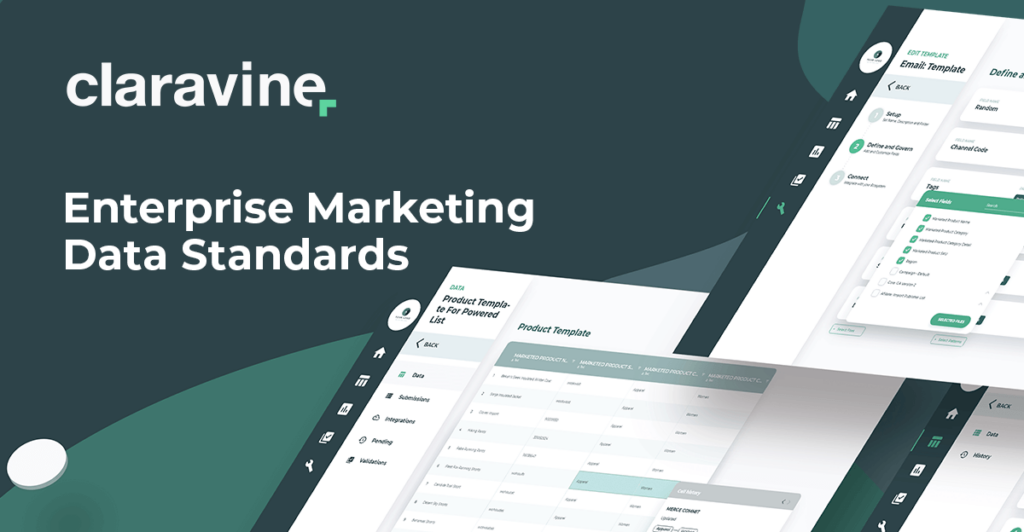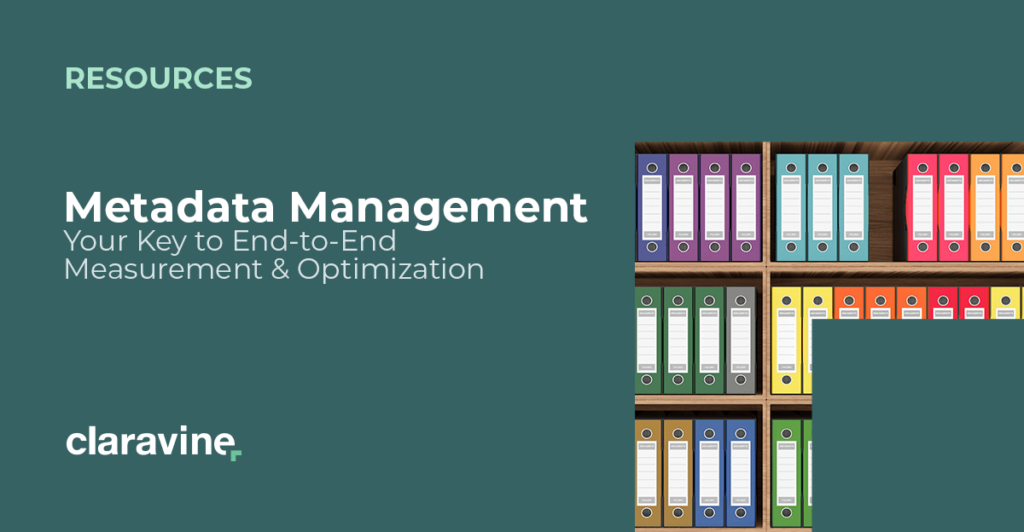Fix These 7 Data Integrity Issues and Embrace Best Practices

Data integrity issues can be aggravating, like when they cause a momentary loss of access to a data set. They can also be catastrophic, like when they lead to a PII data breach of your entire customer base. Here’s how to avoid that.
Failing to address data integrity problems can have costly, far-reaching consequences in terms of lost productivity and revenue, squandered opportunities, and reputation damage.
An IBM study estimated that bad data costs the U.S. $3.1 trillion annually.
As more organizations pursue data democratization, they must establish data integrity best practices to ensure that expanding access to data drives real business value.
Read on to uncover the top (read: costliest) data integrity issues organizations should be aware of and how to resolve them. Then dive into how data integrity issues impact your business through three lenses: marketing performance, operations, and compliance.
Let’s get started.
(Wait — are you asking yourself, What is data integrity? That’s OK, just start with our overview of enterprise data integrity.)
In This Article
Organizations that establish a robust data governance framework with data integrity best practices are well-positioned to make accurate, informed decisions that support continued growth and competitive advantage.
Unfortunately, many businesses fail to prioritize data integrity and are left to grapple with the consequences of bad data — not to mention the realization that remediation is far more costly and time-consuming than establishing good practices in the first place.
Here are seven examples of data integrity issues and how to address them, so they don’t impact operations and your bottom line.
1. Lack of data integration
As an organization’s data sprawl grows, it becomes increasingly difficult to meet the demand for accurate and consistent data. Often, data isn’t where it should be. Sometimes it’s late getting there. There are duplicates. And the data may be formatted incorrectly.
Each scenario represents a lack of data integration and leaves users to question the trustworthiness of data.
Data integration involves consolidating data residing in different sources to provide a single source of truth for users. The process involves data cleansing and ETL mapping. It provides the foundation for actionable and effective business intelligence.
By investing in data integration tools, organizations can ensure access to consistent data sets their users can trust. But that also leaves open the door to mismatched data from disparate sources.
2. Manual data entry and collection processes
Manual processes are inherently error-prone and are the root cause of many data integrity issues. Therefore, eliminating as many manual processes as possible — as soon as possible — should be mission-critical.
Implementing data validation processes restricts the data values users can enter into a cell, in an effort to eliminate input mistakes. Examples include text or data field types, drop-down lists, and multiple-choice menus.
Deploying data validation across an enterprise can be daunting and never-ending, though, without the right approach.
3. Multiple analytics tools
If you’ve been in business a while, chances are you’ve accumulated multiple analytics tools for different functions within the organization. Unfortunately, if they don’t “talk” to one another, you’re likely to duplicate efforts or generate conflicting results.
Data integration efforts and an effective technology stack will eliminate siloed analytics by standardizing data access and analysis across the organization.
4. Poor auditing
Knowing the “who, what, when, where, and why” of every change is essential for data integrity. Without complete and consistent audit trails, there’s no way to ensure accurate and trustworthy data.
A data steward or data controller can provide oversight, monitor audit trails, and take appropriate corrective action when necessary.
5. Reliance on legacy systems
Despite advances in technology, some organizations still rely on outdated data management techniques such as traditional enterprise data warehouses (EDW) or Excel spreadsheets.
Of course, these legacy systems don’t support data integrity or sophisticated analytics. Modern, data-driven organizations leverage the cloud to unify their data where it can be accessed for analysis and business intelligence.
6. Improper data entry training
When users aren’t properly trained on data integrity policies and processes, they’re likely to introduce errors into your data that could potentially impact the entire organization.
Regular training reinforces best practices for how users should interact with data, helping to minimize errors. Training also promotes the idea that everyone is accountable for data accuracy and data quality, ensuring users feel invested in the organization’s overall data integrity.
If this is where you think your organization needs the most help, consider kicking off a data democratization initiative simultaneously.
7. Inadequate data security and maintenance
Along with human error, inadequate security and maintenance practices also contribute to data integrity issues.
Staying up to date with antiviral software and current security threats while constantly monitoring and adjusting data access controls are essential to maintaining overall data integrity.
That’s all to say, elevating data integrity throughout your organization with a data standards tool unlocks solutions to these issues, including:
- Improved data integration that avoids duplication and mismatch
- Streamlined data entry/collection with built-in data validation
- Connectivity between distinct analytics tools
- Continuous auditing with change records
- Easier transitions from legacy systems
- Improved data literacy and democratization
- A single stop for access, security, maintenance, and other controls
Let’s explore how this looks in practice.
The Benefits of Data Integrity: 3 Practical Examples
Every department depends on reliable data to fulfill its organizational role and drive revenue. Here’s why data integrity is crucial, specifically to marketing, IT operations, and compliance.
Marketing operations
The ability to engage prospects with the right message at the right time is a hallmark of effective digital marketing. It’s accomplished by leveraging marketing data, first-party data, and other information sources to target ideal customers.
But without data integrity, marketing operations and ad operations can’t trust they’re getting an accurate view of the customer. They’re also unable to effectively support or contribute the following to the organization:
- Effective marketing taxonomies: Data integrity provides the foundation for taxonomies and metadata management — both connect data-driven insights with digital content to influence and drive the customer journey.
- Sales support: Data integrity ensures sales reps can consider marketing qualified leads legitimate, worthy of their time and attention. Sales reps also depend on marketing taxonomies to streamline access to digital assets to support their sales cycles.
- Precise analytics: Remember when Coca-Cola tried to gain a competitive advantage with the introduction of New Coke in 1985? Now, who knows if precise analytics would have prevented one of the biggest marketing campaign flops in history. But modern brands wouldn’t launch a marketing campaign — let alone change a top-selling product — without accurate, comprehensive insights about their prospects and customers.
- Accurate marketing forecasts: Stakeholders won’t commit resources to expensive marketing campaigns without a reasonable degree of certainty that it will pay off. Data integrity ensures organizations can better predict the performance of campaigns to justify the investment.
- Strong marketing ROI (MROI): Being able to measure marketing campaign performance means businesses can identify and pursue the activities that have a real impact, increasing their overall MROI.
With data integrity, organizations can leverage first-party data for precise analytics to fuel campaigns that are better aligned with audience demographics, behaviors, actions, and interests. Marketing data standards are the golden thread holding this all together.
IT Operations
Individual business units controlled their data and implemented their own data management policies and processes in the past. Thankfully, those days are coming to an end as organizations embrace enterprise-wide data management and democratization strategies.
Of course, data integrity is essential to support a single, secure access point for accurate, trustworthy data. And it promotes countless operational efficiencies that boost productivity and streamline processes.
Here’s a sampling of how data integrity via data standards elevates the work of data science and analytics teams:
- Provides uniformity to how data is accessed and viewed
- Establishes key data elements and definitions that streamline sharing across the enterprise
- Safeguards against data loss providing access to accurate, trustworthy backups
- Helps distinguish between unintentional errors and criminal activity
- Sets critical process parameters and controls
- Ensures data completeness by identifying gaps in information
- Provides consistent, accurate reporting that can be trusted
- Allows for precise analytics and business intelligence
Compliance
The General Data Protection Regulation (GDPR) and the California Consumer Privacy Act (CCPA) are fueling data integrity trends across every industry around the world.
However, achieving CCPA and GDPR compliance is just the tip of the iceberg for highly regulated industries where data integrity issues can physically harm the consumer or the environment.
For example, pharmaceutical companies must also comply with FDA regulations related to quality assurance and good manufacturing processes (CGMPs). Instances of poor records management or falsified data can lead to an FDA warning letter and hefty fines. These penalties are often compounded by stalled production during remediation, missed market opportunities, and reputation damage.
Many in the industry are learning that it’s more costly to correct data integrity issues than enact policies and procedures that ensure integrity from the get-go.
Here are common issues FDA regulators routinely identify in laboratories that haven’t invested in data integrity measures:
- No password control or shared passwords on workstations and analytical software
- Unauthorized data access
- Poor documentation practices that compromise data reliability
- Evidence of data manipulation to pass quality control thresholds
- Backdated documentation
- Use of multiple sample runs to achieve desired results
- Lack of audit trail documenting changes
Bringing Data Integrity to Your Organization
Data isn’t just an IT issue. Your organizational data’s overall health and integrity have an enormous impact on the entire enterprise — marketing performance, analytics, and compliance are just three examples.
Ensuring data integrity must be a mission-critical, enterprise-wide effort to avoid the costly, far-reaching consequences of bad data. Consider a data integrity solution to support that effort.
Claravine can help. Learn how by taking a video tour of our Data Standards Cloud.












